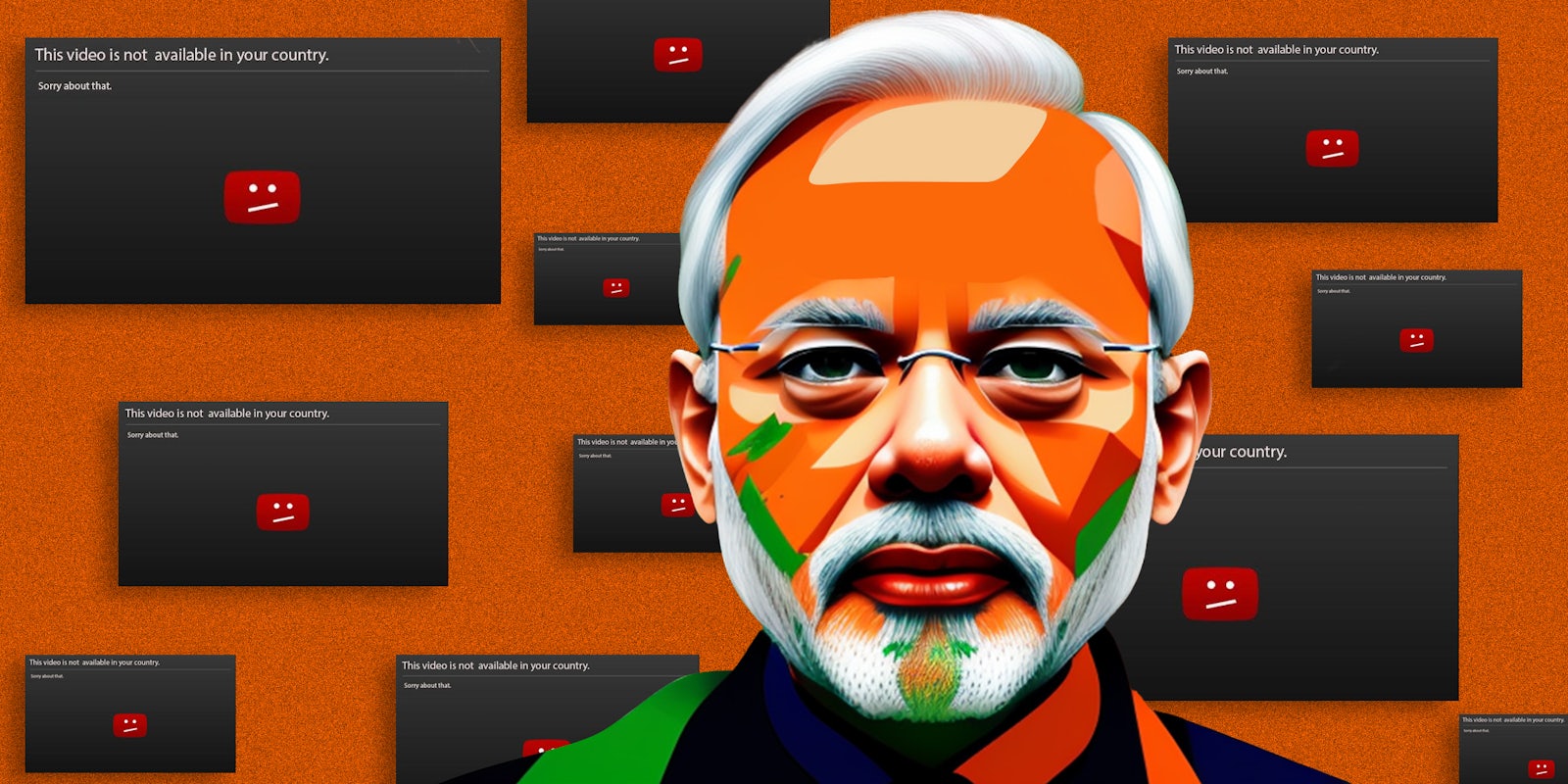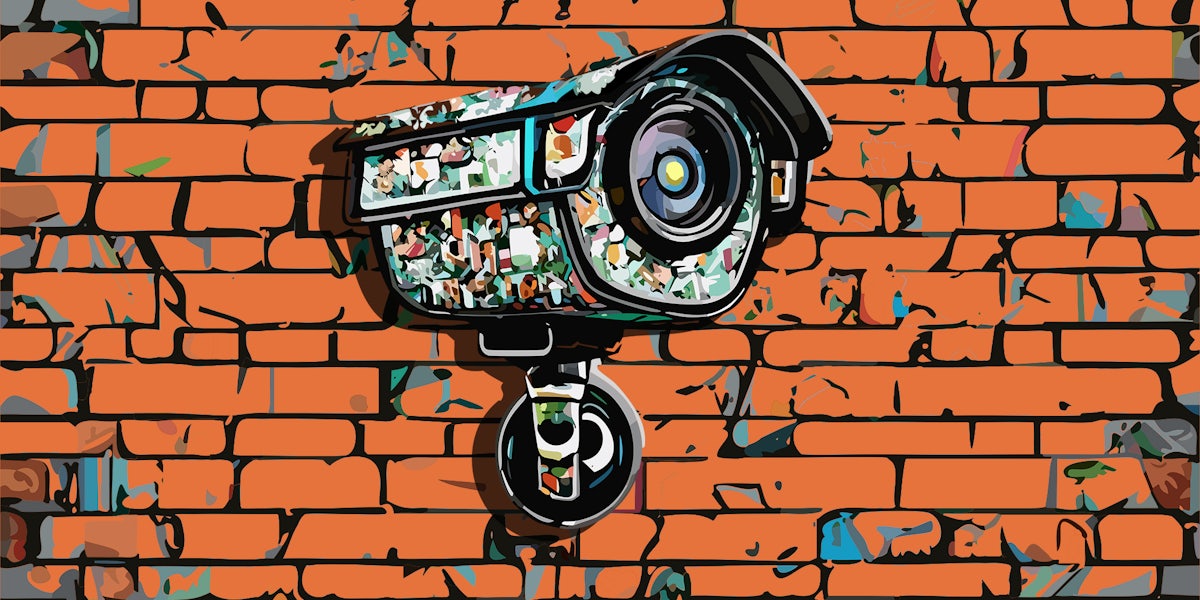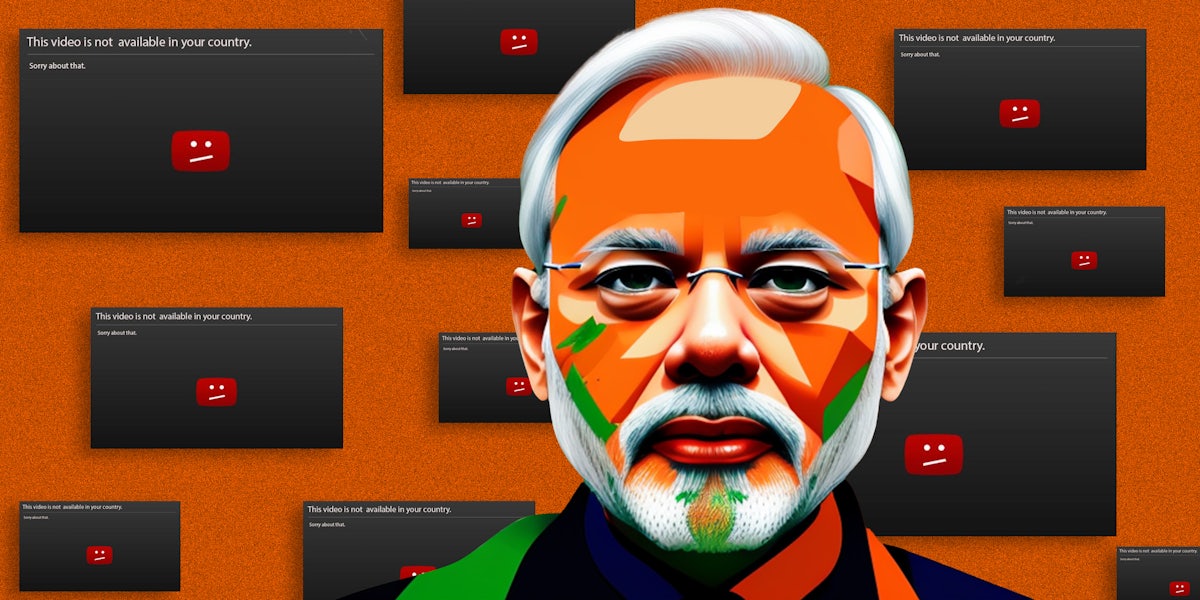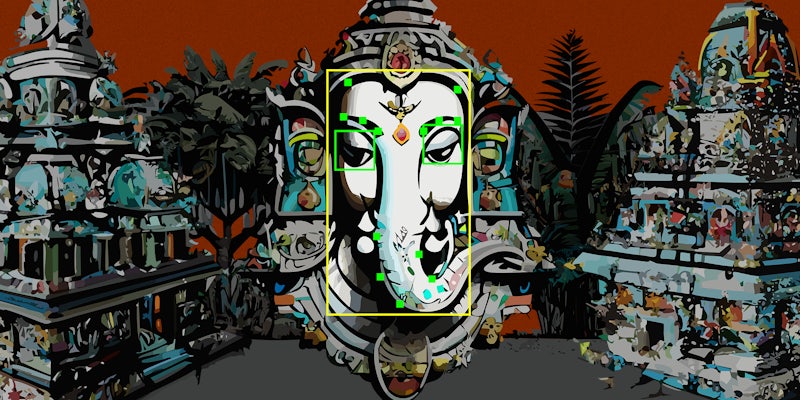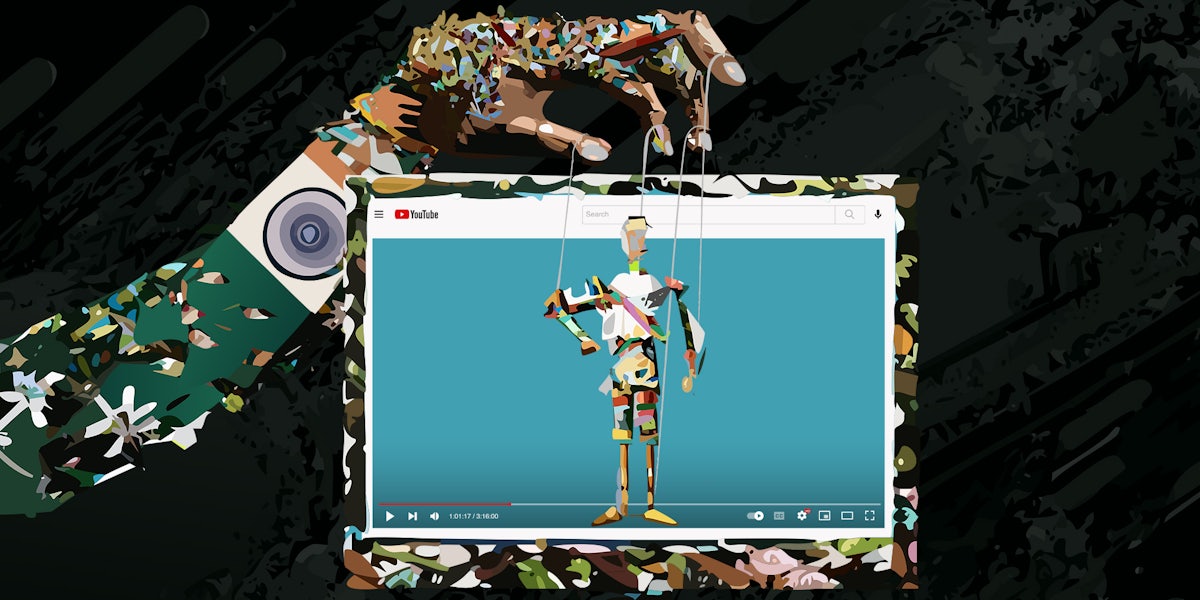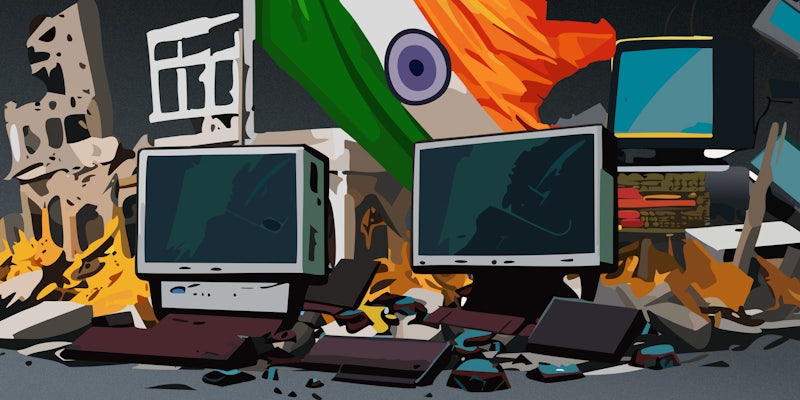A primary school teacher in India’s most populous state—Uttar Pradesh—was caught on camera using slurs for Muslim women while asking their students to slap a Muslim student in front of the class.
The seven-year-old child stood still, sobbing, as his fellow classmates took turns hitting him one by one, all while the teacher, angry, kept imploring students to hit him harder.
The video, shared on social media, immediately went viral.
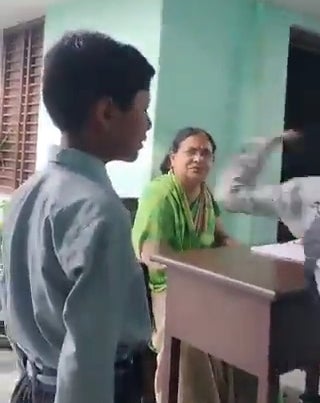
But hours later, many users began seeing the following when trying to access posts about it: “Your tweet has been withheld in India in response to a legal demand.”
X users were outraged, especially as the withholding appeared to be a clear, intentional violation of Indian laws.
The chairperson of the National Commission for Protection of Child Rights, Priyank Kanoongo, tweeted on Aug. 25 urging people not to share video of the incident, to avoid revealing the identity of the child who was slapped.
Indian laws can criminalize the identification of victims in certain crimes. But in this instance, the legal demands weren’t about keeping the child safe.
It wasn’t only videos that were withheld. Posts about the incident that didn’t reveal the child’s identity were also censored.
That included a widely circulated tweet by Nadim Asrar, the South Asia editor of Al Jazeera English. Their post didn’t disclose any identity. Other users whose tweet were blocked included actress and Indian National Congress leader Urmila Matondkar, reporter Gargi Rawat, and senior journalist Rohini Singh.
These orders were issued by the Indian government under Section 69A of India’s Information Technology Act, 2000, a law now being abused regularly as Prime Minister Narendra Modi’s Bharatiya Janta Party (BJP) cracks down on any digital information that could be damaging to the party.
The Information Technology Act came into effect in 2000 under the previous rule of the BJP, but recently, the Modi government has been sending non-stop legal requests to X to withhold tweets that can generate outrage against the government, said Prateek Waghre, policy director at Internet Freedom Foundation (IFF).
“The tendency is that whenever there is information that can hold the government accountable and can make them uncomfortable, their first response is to censor that information,” said Waghre.
As the Modi government has pushed a virulent strain of Hindu nationalism, it has sought to control any digital mechanism where criticism can crop.
X said in a transparency report that India submitted the highest number of demands to remove tweets by verified handles of journalists and news outlets between July and December 2021.
While the site doesn’t always comply, that doesn’t always matter, as the effect itself is chilling, attempting to dissuade the populace from even trying to report on it.
In August, a hate crime against Muslims generated severe outrage when a Railway Protection Force (RPF) constable, Chetan Singh, shot his superior then crossed through several coaches of a train and killed three Muslim passengers: Abdul Qadirbhai Mohammed Hussain Bhanpurwala, Akhtar Abbas Ali, and Sadar Mohammed Hussain.
His video, recorded by passengers, went viral on X. In it, Singh holds a rifle standing next to a blurred-out body of a bearded man lying in a pool of blood, giving a hate-filled speech, claiming the men he shot were from Pakistan and praising Modi.
“But I am telling you, if you want to live and vote in Hindustan [India]—it is only [Prime Minister Narendra] Modi and [Uttar Pradesh Chief Minister Adityanath] Yogi, these are the only two names.”

The Indian government gave orders to X to block this video hours after it generated widespread outrage.
One of the users whose video was blocked is Mohammed Zubair, co-founder of the fact-checking website Alt News, which documents rising hatred against Muslims in India, as Modi’s BJP has fomented rising violence and anger against the religious minority in the name of Hindu nationalism.
“The government feels the need to take down our videos because of two reasons,” Zubair said. “First, because we translate the Hindi language hate speech in English so it reaches an international audience. Second, when we post videos, we and our followers tag the authorities to take action against the hate speech. So, they are forced to at least take some action. They want to stop this process.”
Zubair believes the Modi government does not want future generations to discover hate crimes committed against the religious minorities under their rule. By blocking videos, Modi’s BJP is doing its best to erase the evidence of the tacit, nationwide campaign to harass, assault, and exterminate Muslims.
And its efforts to keep it under wraps are relentless.
Since April 2020—when he started documenting hate speeches and hate crimes—Zubair received 41 emails from X informing him that agencies of the central government or various state governments of India have tried to block videos posted by him.
Seven of Zubair’s posts from January 2022 were withheld in India at the request of the Indian government. All of these tweets were videos documenting hate speech and hate crimes against Muslims in India.
These include his posts highlighting the videos of the Haridwar Dharm Sansad (Haridwar Religious Conclave) in December 2021 where calls of genocide were made against Muslim minorities, videos of protests by Muslim residents in the city of Haldwani against the proposed bulldozing of their homes, videos of a Hindu monk Bajrang Muni openly making rape threats toward Muslim women in front of a mosque, and video of a Hindu extremist giving speech and talking about “rooting out Muslims.”
The latest came on Sept. 6, after X received a request from Mumbai police claiming that his tweet of a video of a minor Muslim boy being beaten by a mob yelling slogans of “Jai Shree Ram” (Victory to Lord Ram) violated the “law of India.”
The mob in the video assaulted the boy over allegations he had kidnapped a Hindu girl and chanted the name of a Hindu god.
X informed Zubair that they did not take action on the request by Mumbai police.
While local governments can struggle to persuade X, when the state steps in, it gets its way.
“Usually when India’s union government orders X, they take down the video,” Zubair said. “When India’s state governments order X, like in my case, they usually don’t comply. So, it depends on who is calling the shots. That’s not how this should work.”
“But whatever X decides, you are still relying on X’s interpretation of the law,” added Waghre. “You still don’t know on what basis the government issued those orders to Twitter to block a certain video.”
Tanmay Singh, Senior Litigation Counsel with Internet Freedom Foundation, an organization that works on digital rights issues, told the Daily Dot that the government is not following the procedures outlined for censorship.
According to its rules, the government must send its orders to block social media posts to users, explaining the reasons for blocking it and providing users the opportunity to present their side.
“The government is violating procedures by issuing blocking orders without giving the affected users an opportunity to present their side,” Singh said. “You can’t punish someone without hearing their side.”
“The blocking rules do say that the blocking orders need to be confidential,” said Singh. “But India’s Supreme Court interpreted it in Shreya Singhal vs. Union of India that the order might be confidential for the general public but it has to be provided to the affected party and an opportunity as well to present their side.”
Speaking to the Daily Dot, Zubair said it is clearly an attempt to target people who document hate speeches and hate crimes against religious minorities in India.
“When someone makes a hate speech, the video of the hate speech posted by him is not withheld. But when we document the same hate speech, tagging the authorities to take action, our tweets are withheld. Instead of taking action against the person who gave the hate speech, they take action against the journalists documenting it,” said Zubair.
One particular channel, which calls out hate speech specifically, is being directly targeted by Modi and the BJP.
On Aug. 1, 2023, violence erupted in Haryana’s Nuh, a Muslim-majority district, when a religious procession organized by a Hindutva militant organization, the Vishwa Hindu Parishad, made its way through town.
Hindutva is the political ideology associated with the ruling BJP party, its supporters aiming to establish Hindu hegemony in India. Its ideology led to numerous documented acts of hate speech and violence by its believers.
As such, Hindutva Watch, an account that documents hate crimes and hate speeches against religious minorities in India, frequently gets hit with notices from the Modi government.
Six people died in the violence, centered around a viral video by cow vigilante Monu Manesar, who days before the procession, said he would attend.
This angered locals who accused Haryana’s BJP government of shielding Manesar, accused of the murder of two Muslim men.
In the aftermath, a mosque was burned to the ground. The videos of vandalism went viral on X.
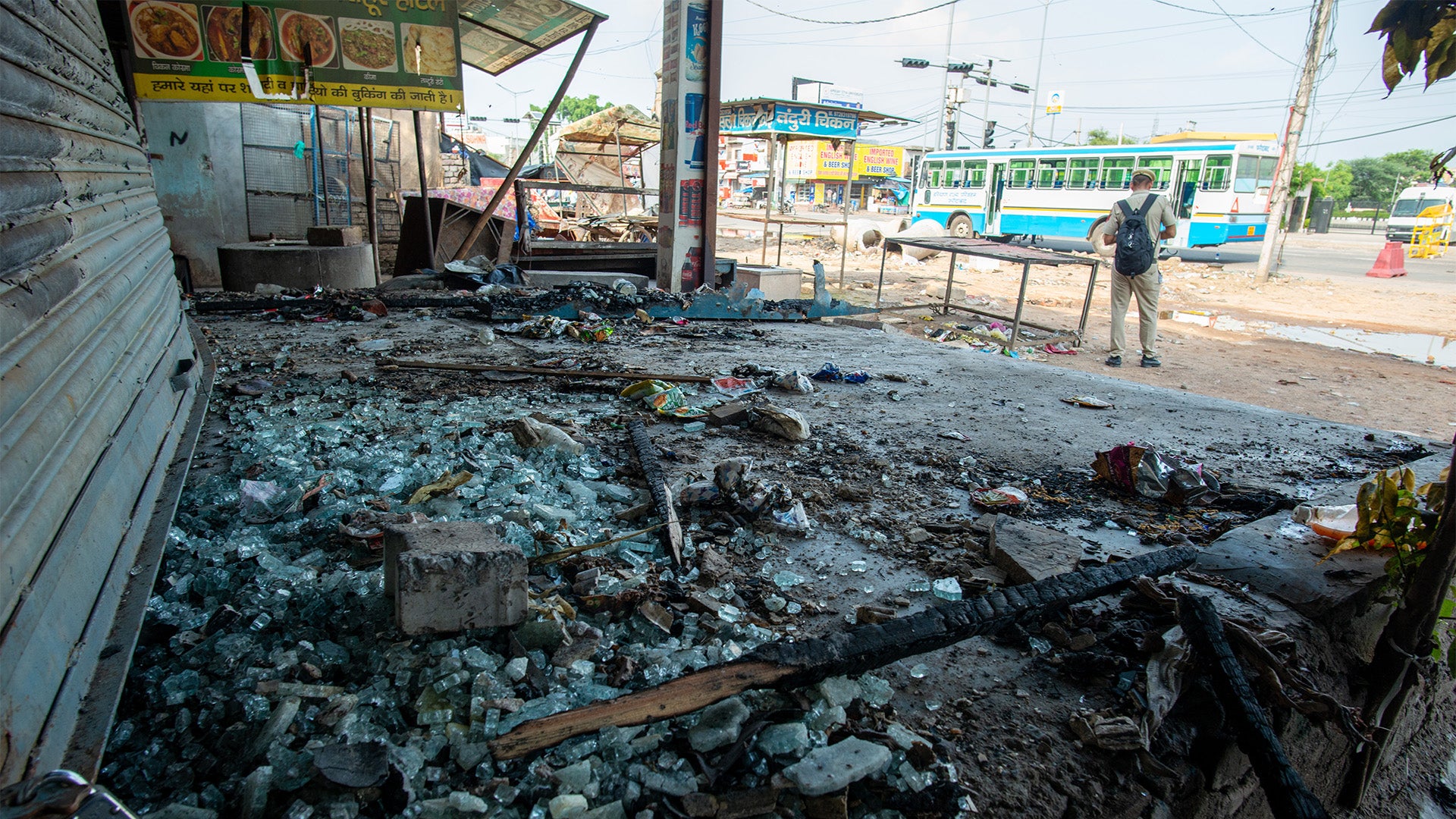
Hindutva Watch received an email from X informing them that Haryana police wanted one of their tweets to be taken down in the aftermath of the Nuh violence, where it documented Hindu extremists using the violent slogan “Jab Mulle Kaate Jaayenge Ram Ram Chillaayenge.” (“When Muslims will be slaughtered, they will scream Lord Ram’s name.)”
“There is an attempt to silence us because our documentation of the hate speeches against religious minorities in India is being used by journalists outside India as well,” Hindutva Watch’s Washington-based admin Raqib Hameed Naik said to the Daily Dot. “So, internationally this puts the Indian government in an uncomfortable position as they can’t defend this. Hate speeches documented by us were used by petitioners who went to India’s Supreme Court to file a case against hate speech. That’s why they want to stop the documentation of hate speeches.”
In just the last year, Hindutva Watch received six emails from X informing it that various agencies in India wanted its tweets documenting hate speech against Muslims to be withheld in India. Four requests were approved.
In July, one even went further. A request from a law enforcement agency in India’s state of Maharashtra called for its X account to be entirely withheld inside India, claiming that it violates India’s Information Technology Act.
The Modi government going after journalists and activists documenting videos of hate speech is setting a dangerous precedent that could be followed and iterated on by successive governments.
As this government is aggressively censoring videos on X, journalists like Zubair now don’t post videos documenting anti-Muslim hate speeches and hate crimes as frequently as they used to.
“By censoring the videos, this government wants to kill this system of documentation which demoralizes journalists to do this work,” said Zubair. “This also allows the government to escape accountability.”
“It’s very unlikely that this is going to stop,” fears Nail. “This government has set an example on how to control information which is uncomfortable for them.”


